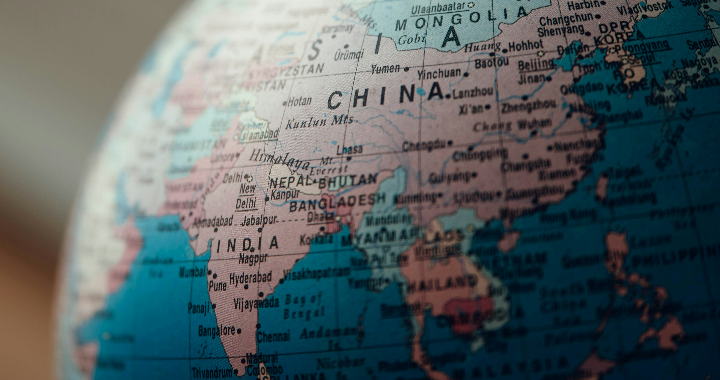India is 1.2 times the size of the eurozone, 77% the size of the European Union and one third that of the United States. But its population is 4 times that of the US and more than 3 times that of the EU. And its population is still growing, unlike most industrialised countries.
The working population (aged 20-64) will grow by 0.9% per year and peak at 902 million in 2050. Currently, 42% of India’s population is employed in agriculture (compared with 22% in China and 2% in the US). But many Indians want to move out of agriculture. According to the IMF, India will need to create between 145 and 330 million jobs by 2050.
From 19 April until 1 June 2024, general elections are being held in India. The results will be announced on 4 June 2024.
Job creation is key
Until now, India’s growth engine has been in the service sector (e.g. IT consultancy or back office tasks for companies and institutions), which has meant a big leap forward for a small number of educated people. For everyone to benefit from the advantages of economic growth, industrial jobs need to be created. Huge efforts are being made to attract industrial companies, such as the Production Linked Incentive scheme which gives subsidies to companies that come to India to produce.
These industrial jobs cannot be too complicated because basic education in India is not optimal. As an example, a study by Indian NGO Pratham shows that only 40% of Indian rural students aged 10-11 years have reading skills at the level of 7- or 8-year-olds. That is why a lot of people are trained within companies. However, the sectors that receive subsidies, such as chemicals, telecom, computers, electric vehicles, batteries and so on are very capital intensive. In this way, the Indian government is financially supporting specialised sectors that create very few jobs. What India needs is simple labour-intensive industries for people with basic education, such as textiles, leather, furniture and similar.
Major infrastructure work, like the building of routes, airports, and ports is being done to improve logistics in this huge country. Evidence of this is that nearly 20% of the national budget is being spent on capital investment, the highest percentage in a decade.
Another major improvement has been the introduction of a single and digital Goods and Services Tax, a value-added tax that has replaced eight central and nine state taxes. India is at the forefront of digitisation, which should lead to big efficiency gains. Young Indians are rapidly becoming a digital society, partly through the introduction of the Aadhaar ID digital passport. And India Stack, a collection of digital infrastructure and platforms that deliver government and private services to citizens.
New government will need to reform
Laws passed by India’s central government have to be implemented by the 28 states, which makes them powerful but also adds to the complexity of the country.
- Labour reforms have been approved and labour laws have been simplified, but they still need to be implemented in the different states. The fact that factories cannot operate as they do in China (e.g. 12-hour shifts, night work …) makes it difficult to attract large international companies.
- Land reforms are needed to make it easier for companies or the government to acquire land to expand or build infrastructure. Complex sales procedures and poor land records make land acquisition a multi-year process.
- Agricultural reforms to move to a more market-based approach instead of having middlemen monopolise the market have failed. Moving towards an industrial path in a predominantly agriculture-oriented society, is a very slow process.
Koen De Leus, Chief Economist at BNP Paribas Fortis: “When investing in India, companies must consider that rules can differ from one state to another. Simplification is indispensable to attract industrial companies to the country. Those companies will have to be there on a long-term basis, willing to adapt to the Indian customs and culture, and work together with the Indians.”
Threats to the Indian economy
Despite its opportunities, India also has many vulnerabilities. The most prominent threat is climate transition. India is one of the world’s most vulnerable countries to climate change. Its energy needs over the coming decades are huge, driven by high economic growth and a large population, and fossil fuels will remain an important part of the energy mix. The country needs help to achieve its goal of net-zero emissions by 2070. The financial costs of mitigating climate change are also significantly higher than in developed countries. In India, these costs are 50% higher in % of GDP than in developed countries.
However, India is not in a position to finance the climate transition on its own. Not only do Western governments need to finance part of India’s transition, but a mechanism needs to be put in place to lower the average cost of financing from private sources.
Today, India already faces financial and macroeconomic risks. The large weight of food in India’s consumer basket of goods means that the balance between government intervention and the free market is precarious.
India’s current account deficit is negative. Moreover, the country is also highly vulnerable to oil shocks, as it imports 87% of its oil. This exposes India to external geopolitical and price shocks. The budget deficit is high at 7.5%, but under control. At 81%, its debt-to-GDP ratio is one of the highest among emerging countries. However, external financing is very limited, which shields India from external shocks. And as the economy formalises, revenues are – gradually – rising.
Koen De Leus concludes: “India needs to attract industry to create well-paid factory jobs. But first it needs to improve the quality of its substandard primary education. The country has been the standard-bearer for the developing world in recent decades, with its high growth rates despite skipping the industrialisation phase. To maintain these high growth rates, it needs to take a step back and embrace that industrialisation after all. Therefore, reforms are a crucial priority for the next government.”
NOTE: The opinions in this text are from the Chief Economist of BNP Paribas Fortis, and do not necessarily represent the opinion of BNP Paribas Fortis.
BNP Paribas Fortis (www.bnpparibasfortis.com) offers the Belgian market a comprehensive range of financial services for private individuals, the self-employed, professionals, companies and public organisations. In the insurance sector, BNP Paribas Fortis works closely, as a tied agent, with Belgian market leader AG Insurance. At international level, the Bank also provides high-net-worth individuals, large corporations and public and financial institutions with customised solutions, for which it is able to draw on the know-how and international network of the BNP Paribas Group.
BNP Paribas (www.bnpparibas.com) is the European Union’s leading bank and key player in international banking. It operates in 65 countries and has nearly 185,000 employees, including more than 145,000 in Europe. The Group has key positions in its three main fields of activity: Commercial, Personal Banking & Services for the Group’s commercial & personal banking and several specialised businesses including BNP Paribas Personal Finance and Arval; Investment & Protection Services for savings, investment and protection solutions; and Corporate & Institutional Banking, focused on corporate and institutional clients. Based on its strong diversified and integrated model, the Group helps all its clients (individuals, community associations, entrepreneurs, SMEs, corporates and institutional clients) to realise their projects through solutions spanning financing, investment, savings and protection insurance. In Europe, BNP Paribas has four domestic markets: Belgium, France, Italy and Luxembourg. The Group is rolling out its integrated commercial & personal banking model across several Mediterranean countries, Turkey, and Eastern Europe. As a key player in international banking, the Group has leading platforms and business lines in Europe, a strong presence in the Americas as well as a solid and fast-growing business in Asia-Pacific. BNP Paribas has implemented a Corporate Social Responsibility approach in all its activities, enabling it to contribute to the construction of a sustainable future, while ensuring the Group's performance and stability.

